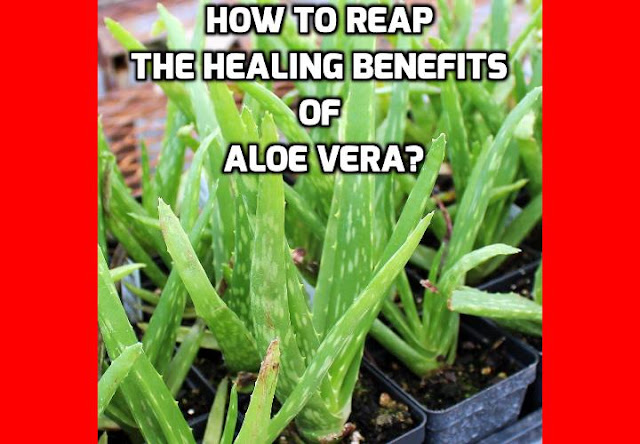 |
Click Here to Discover the Health Benefits of Aloe Vera |
HEALING ALOE VERA PLANTS ARE EASY TO GROW INDOORS OR OUT AND HOW TO GET THE HEALING
BENEFITS OF ALOE VERA
Aloe Vera,
known as the healing plant, is easy to care for indoors or in the garden. It is
a drought tolerant succulent which grows well in dry shade to part sun. Its bright
green stalks grow up to 1-foot long and up to 2 inches thick They usually have
creamy white stripes or dots along the leaves.
Aloe plants grow upright
and spread with time by creating clumping offsets. Perennial aloe produces
dramatic, bright orange flowers on long stalks in the spring and summer.
Used
medicinally aloe vera gel is beneficial for burns, minor cuts, scrapes, insect
bites and other skin irritations.
Water-wise
aloe is great for xeriscaping in dry gardens with other succulents and cacti.
They don't mind heat as long as they don't get too much sun.
Aloe
does best in light or dappled shade on the porch or on the windowsill. It is
even reliable in dry shade. One to two hours of direct sun is plenty. Dark
brown or orange spots on the leaves is a sign of sunburn.
Aloe
vera is easy to care for and only needs water once a month or when the stalks
become shrivelled. Planted in the ground, it can tolerate more drought and will
grow slightly larger. Aloes are cold hardy to about 45 degrees.
Mine
have survived a light dusting of frost, but they have overhead protection. I
wouldn't leave them outdoor in the open if Jack Frost visits your area
frequently. Frost damage usually shows up as brown tips or shriveled, brown
stalks.
Indoors,
they are suited to the hot dry conditions of the average home. They will
tolerate a few hours of sun a day, but should be fine anywhere with lots of
bright, indirect sunlight.
Aloe
vera plants form offset pups and will eventually become a clump. Mine started
out in a small 4" pot from the nursery. Normally, you should repot plants
in a slightly larger pot.
But
I planted my aloe in a huge 12" pot, knowing it would fill in. Who has
time to re-pot their plants all the time? To keep the pot from looking empty, I
planted a small trailing succulent around the edges.
They
have similar cultivation needs, so they get along great and look terrific. You
can see an aloe vera picture and even download the wallpaper on my succulent
webpage at http://www.theGardenPages.com.
After
the first year, my aloe created lots of offsets and filled in the pot nicely.
The new shoots are easy to tease out from the main plant so I can repot them or
give them to friends.
Aloe
vera is famous for its healing benefits and is commonly grown in kitchen
gardens to help with minor burns and other skin problems.
To
get the healing benefits of aloe vera, work with one inch chunks cut from the
tips of the leaves. Peel off the spines and cut open the chunk. Squeeze out the
aloe juice and pulp onto sunburns or other skin irritations.
Spread
it around with your fingers or the aloe peel. It will feel cold on burns. The
juice may feel sticky at first, but will eventually dry out, leaving a slight
green tint.
Apply
1 - 2 times a day to cool off burns and help heal skin. I was amazed at how
well it worked on my baby's diaper rash when nothing else helped.
First,
I'd slather the skin with aloe gel, then put the remaining pulp into his diaper
and wrap it all up like a little burrito. Usually the rash was cleared up in a
few hours. Fresh is best, studies suggest aloe starts to lose its properties
within an hour of picking.
Healing
aloe vera plants are easy to grow indoors or out, with outstanding health
benefits and makes a great addition to any garden.
by
Laura Zinkan
To discover more about the healing benefits of aloe vera,
look no further than Yulia Berry’s e-book - “Aloe: Your Miracle Doctor”. From here, you will learn about the wide array of
internal and external uses of aloe vera.
Yulia also dishes out tips on how you can prepare aloe in
your kitchen, depending on the condition that you would like to treat. She also
shares the history of aloe, why it is a must to take care of an aloe plant in
your own home. what its chemical composition is, what the biogenic stimulation
method is, and how it can be used for 130+ home remedies to treat more than
eighty different disorders.
You
may also like:
No comments:
Post a Comment